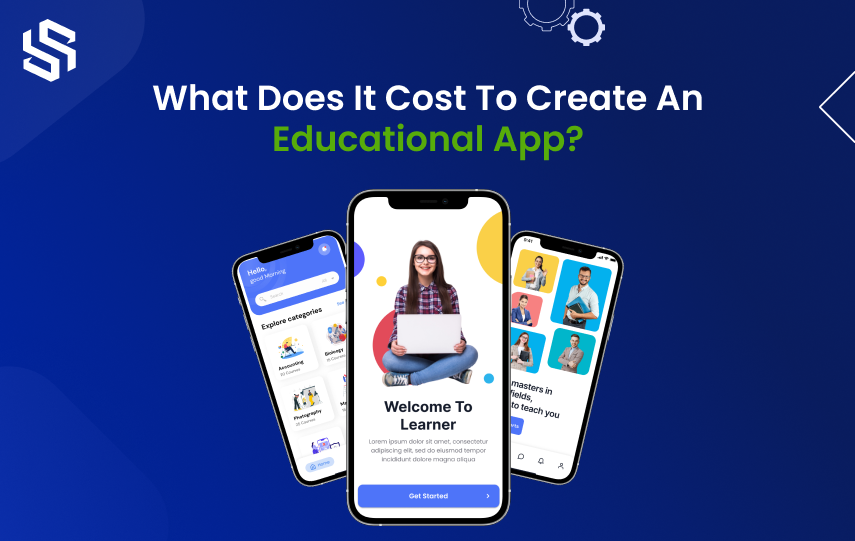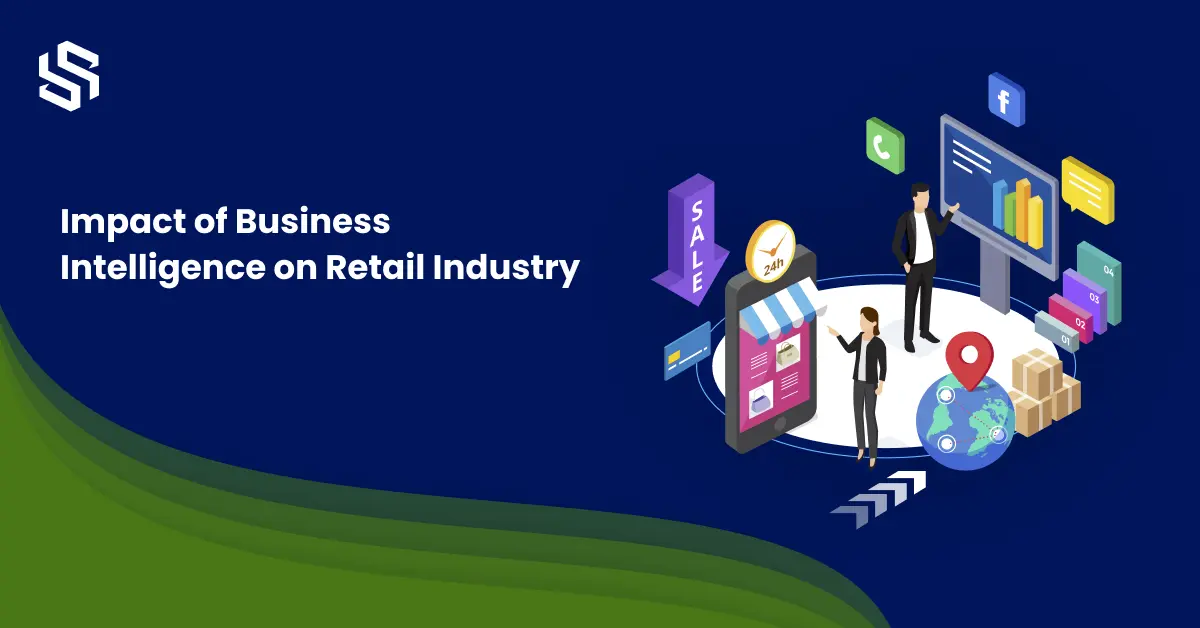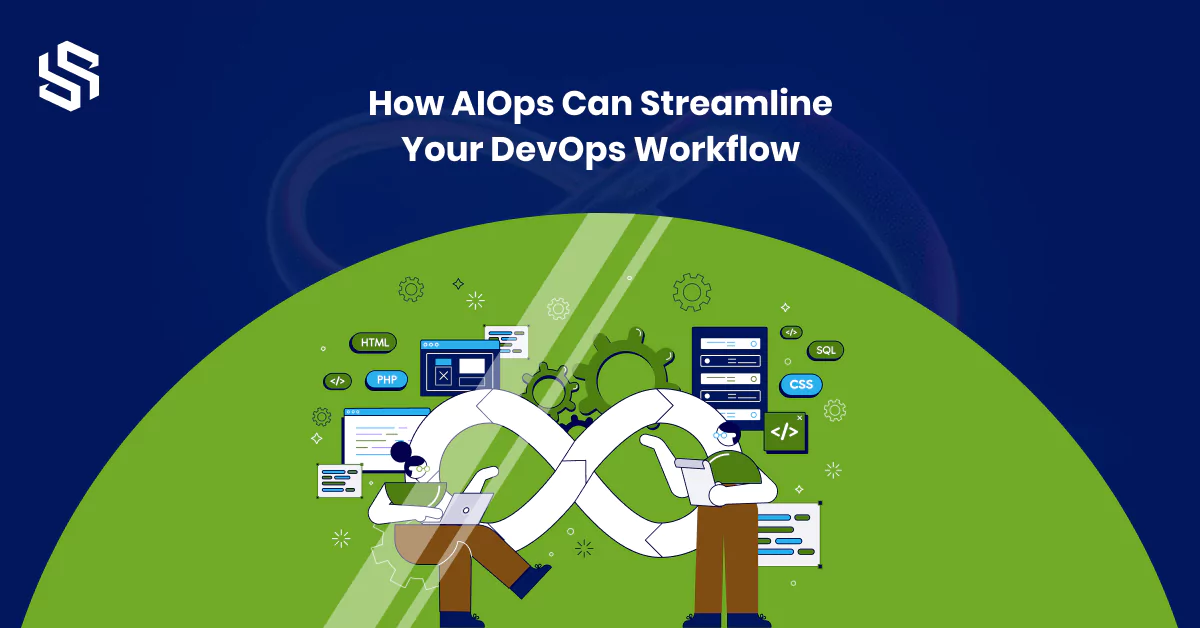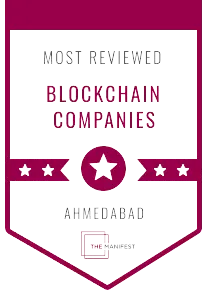The educational app market has been overgrowing in recent years. As technology advances, more students are looking for ways to learn online and educational apps are becoming increasingly popular. With the rise in demand for these apps, the market for educational app development has also seen considerable growth.
According to Statista, the global educational app market is set to reach a value of US$30.2 billion in 2023. This is a significant increase from the US$15.3 billion worth of revenue that the industry was estimated to generate in 2018. This shows the tremendous potential of educational app development.
Moreover, the number of users of educational apps is also on the rise. In 2021, the number of educational app users was estimated to reach 1.6 billion, up from 620 million in 2016. This is due to the rise in mobile technology usage and the increasing availability of online learning opportunities.
Furthermore, the educational app market is projected to experience a compound annual growth rate (CAGR) of 15.3% from 2018 to 2023. This indicates that the market is experiencing a period of steady growth. This is mainly due to the increased demand for online learning resources and the rising popularity of educational apps.
As a result, more companies are now investing in educational app development. In fact, according to a report by Grand View Research, the education app development market is projected to reach US$11.07 billion by 2025. This is a significant growth from the US$2.00 billion worth of revenue that the industry was estimated to generate in 2018.
Overall, the education app for students market will continue experiencing significant growth over the next few years. With the increased demand for online learning opportunities, the number of users of educational apps is likely to continue to grow. As a result, more companies are likely to invest in educational app development to capitalize on this growing market.
Embark on an inspiring educational journey of knowledge and growth as you immerse yourself in the vast array of captivating learning opportunities offered by our cutting-edge education app!
What is an Educational App?
An education apps for students is a software application designed to help students learn and develop their knowledge, skills, and abilities. It is a digital learning platform that provides access to general educational uses of mobile app such as courses, tutorials, lectures, quizzes, and other forms of online learning.
Educational apps or e-learning apps can be used to create engaging learning experiences, improve student engagement in the classroom, increase student understanding of complex concepts, and make learning easier. They can be used to supplement traditional classroom instruction, provide more interactive lessons, and provide additional support to students. Educational apps can also provide an interactive way for students to explore and practice new concepts.
Who Utilizes Education Apps?
- Students: Educational apps are primarily used by students of all ages, from primary school to college. These apps provide interactive and engaging content to help students learn and practice new skills.
- Teachers: Many educational apps are designed to be used in the classroom, so teachers also use these apps to supplement their teaching and provide extra resources for students.
- Parents: Some educational apps are aimed at helping parents support their children’s education at home, such as apps that provide reading materials, educational games, and learning resources for various subjects.
- Home-schoolers: Parents who homeschool their children use educational apps to provide them with curriculum, lesson plans, and educational activities.
- Lifelong learners: Many adults use educational apps to learn new skills and expand their knowledge, regardless of age or educational background.
- Educational Institutions: Some educational apps are used by schools and other educational institutions to supplement their curriculum, keep track of student progress, and communicate with parents or guardians.
- Corporate or professional training: Corporations and other organizations also use educational apps to provide training to their employees and improve skills related to their profession.
- Distance learning students: For students who are studying remotely or online, educational apps provide a helpful platform for learning, delivering curriculum, and tracking progress.
Benefits Of Mobile Apps In Education
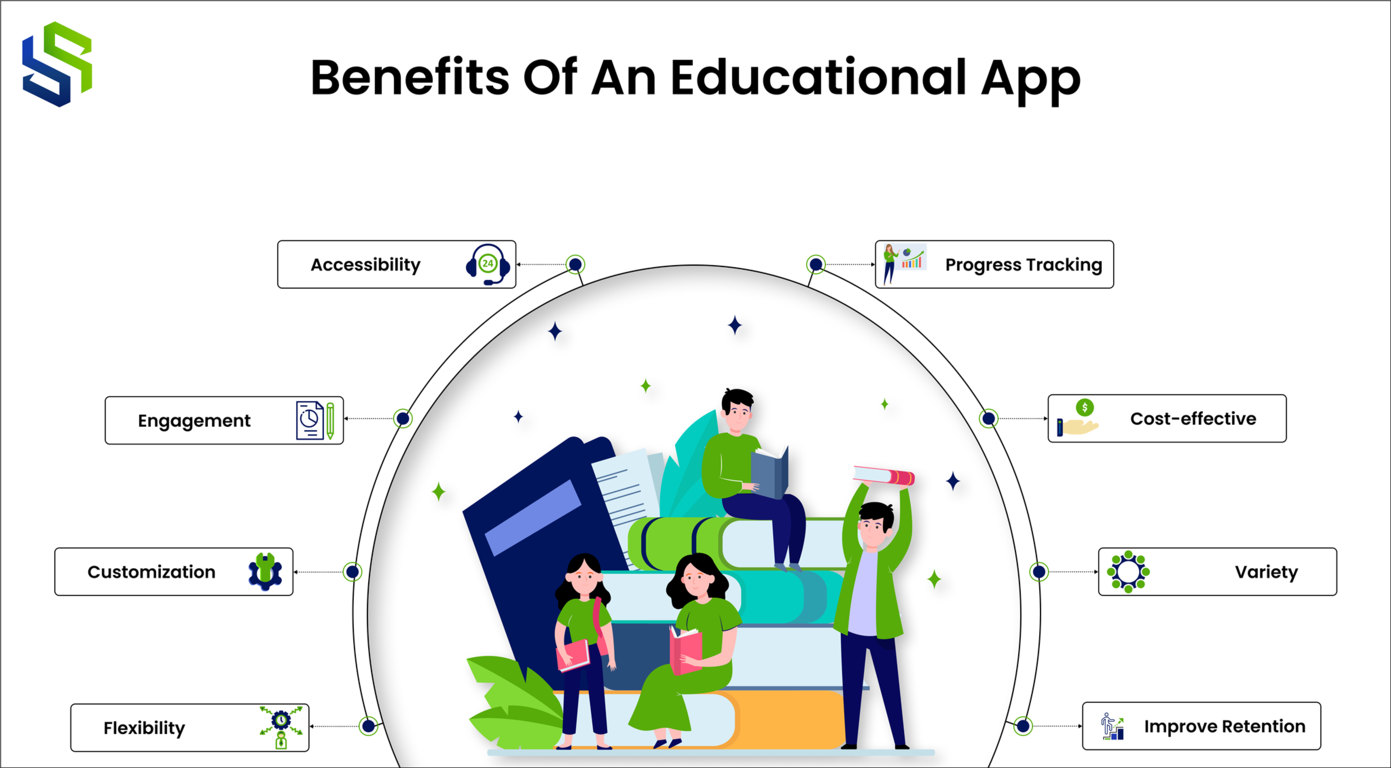
E-learning apps are becoming increasingly popular and for a good reason. With the right educational app, students can use mobile apps for education to access a wealth of information and resources, learn new skills, and become better prepared for future success. Here are some of the advantages of educational apps:
Flexibility
Educational apps allow students to learn at their own pace and on their own schedule. This can be especially beneficial for students with busy schedules or difficulty attending traditional in-person classes.
Customization
Many educational apps offer personalized learning experiences, which can help students learn more effectively. Some apps use adaptive learning techniques to adjust the difficulty level and the type of content based on a student’s abilities and progress.
Engagement
Educational apps often use interactive elements, such as games, simulations, and quizzes, to keep students engaged and motivated to learn.
Accessibility
Educational apps are available on various devices and platforms, making it easy for students to access learning materials and resources anytime, anywhere. This is particularly beneficial for students in remote areas or with mobility issues.
Want to develop an education app that students will love?
Progress Tracking
Many educational apps provide students and teachers with detailed information on progress and performance, which can help identify areas that need more attention and also help celebrate accomplishments.
Cost-effective
Developing and distributing an educational app is typically less expensive than traditional educational methods, such as textbooks and workbooks, and is, therefore can be more accessible to more students.
Variety
Educational apps come in various formats and cover many subjects, from basic literacy and numeracy to more advanced topics, allowing students to explore their interests and pursue their goals.
Improve Retention
Educational apps often include interactive elements, simulations, and quizzes, which can help improve retention by making the content more engaging and relatable.
How To Create An Educational App?
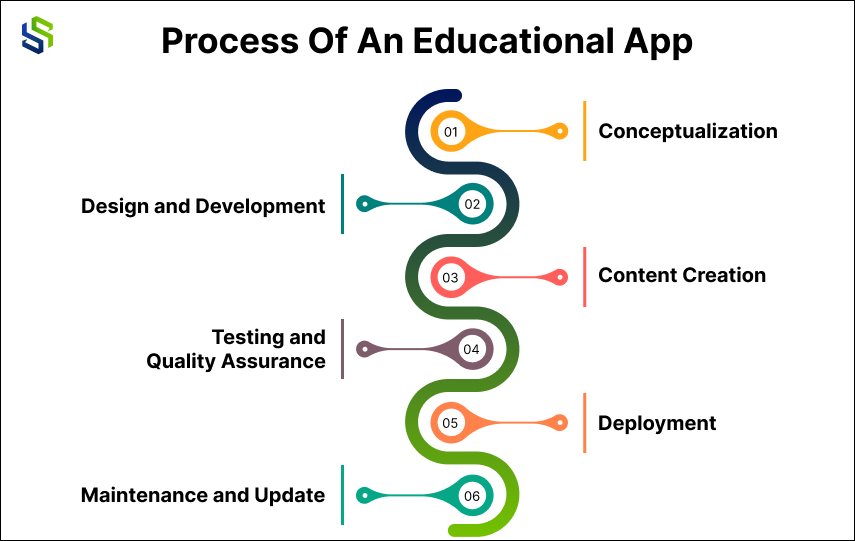
The process of creating an educational app can be broken down into several distinct stages, each of which plays a crucial role in the app’s development. From concept to launch, here’s what you need to know to create a compelling and engaging educational app.
Conceptualization
This is the first step in creating an educational app, where you develop an app that will help users learn something new. This could involve researching what educational apps already exist and identifying gaps in the market.
Design and Development
After you have a clear concept, you can begin designing the user interface and developing the app. This will involve creating wireframes and mockups, writing code, and testing the app to ensure it works as intended.
Content Creation
This stage is an essential part of educational app development. Creating the course material, Quizzes and questionnaires, video, audio, and other relevant multimedia elements.
Testing and Quality Assurance
After the development and content are completed, the app will be tested by the development team or by Beta testers. They test the app for functionality and usability and ensure no bugs or errors.
Deployment
After the app has been thoroughly tested and any necessary changes have been made, it can be deployed to the app store or other platforms where users can download and use it.
Maintenance and Update
As educational apps are continuously updated with new courses, videos, and other content, app developers need to keep track of updates and keep the app updated on the app store and also should be supported with fixes and troubleshooting if required.
What Are The Common Features Of Educational Apps?
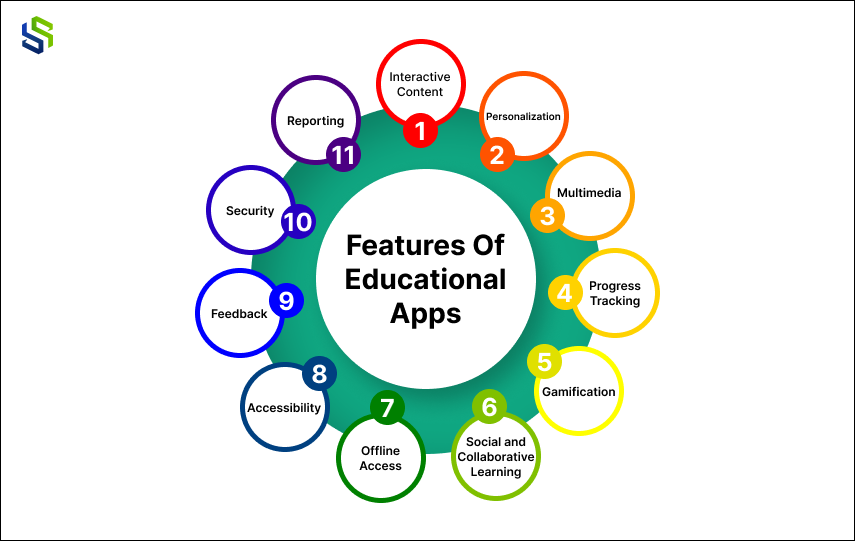
Educational apps are becoming increasingly popular in the current digital age. They are being used as practical educational resources for children and adults. With the help of educational apps, users can access a wide variety of learning materials, such as online courses, tutorials, books, and more.
Regarding educational apps, certain features are essential for successful learning. Some of the educational apps’ crucial features are mentioned below.
Interactive Content
Educational apps should include interactive elements, such as quizzes, games, and simulations, to keep users engaged and help them better understand the material.
Personalization
Personalized learning is a feature where the app can adapt to the user’s learning style, pace, and interests. It allows students to move through the material quickly and focus on areas where they need more help.
Multimedia
Educational apps should include various multimedia elements such as videos, images, and audio to help users better understand and retain the material.
Progress Tracking
Educational apps should allow users to track their progress, so they can see how far they’ve come and what they still need to learn.
Gamification
Gamification is the use of game elements and design in non-game contexts; Educational apps should use it to make the learning experience more enjoyable and engaging.
Social and Collaborative Learning
Concept for an education app but not sure how to make it a reality? We’ve got you covered.
Offline Access
Educational apps should be accessible offline, so users can continue learning even when they don’t have an internet connection.
Accessibility
Ensure the app is accessible to users with different abilities, including support for screen readers, other assistive technologies, and large text and high contrast mode.
Feedback
The app should provide a way for users to give feedback and a mechanism for app developers to track users’ problems and fix them in upcoming updates.
Security
Educational apps should have a proper security mechanism to protect users’ sensitive information, such as login credentials and personal information.
Reporting
The app should be able to provide Reports such as progress, test results, and other statistics that teachers, parents can use, or other stakeholders to monitor the users’ progress.
Top 10 Examples of Educational Apps
- Khan Academy: A well-known platform offering free educational videos and exercises on a wide range of subjects, from math and science to humanities and test preparation.
- Duolingo: An app that provides interactive language learning courses for various languages, making it easy and fun to learn new languages.
- Quizlet: A versatile app that allows users to create and access digital flashcards, study guides, and quizzes across different subjects.
- Coursera: While primarily a website, Coursera also has a mobile app that offers access to online courses from top universities and institutions worldwide.
- Udemy: An app providing a vast selection of online courses on various topics, often taught by experts in their respective fields.
- Photomath: A math learning app that enables students to scan and solve math problems using their device’s camera, offering step-by-step explanations.
- BrainPOP: An app offering educational animated videos on subjects like science, social studies, English, math, and arts, targeted at K-12 students.
- TED-Ed: An extension of the TED Talks platform, TED-Ed offers educational videos and lessons on a wide range of topics for students and educators.
- Scratch: While primarily a website, Scratch also has an offline editor for coding that helps students learn programming concepts through interactive projects.
- Star Walk: An astronomy app that provides users with an interactive sky map, allowing them to explore and learn about celestial objects and events.
The Tech Stack Needed for the Development of Educational Apps
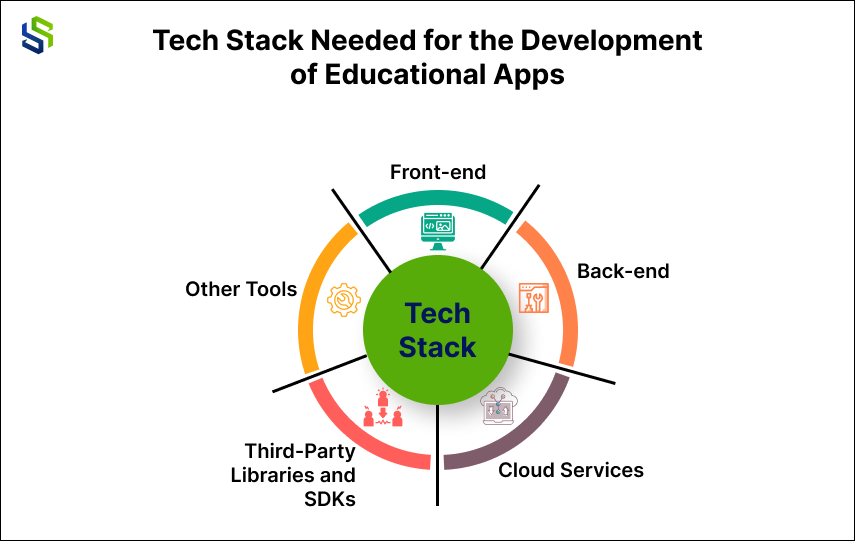
Creating a solid and practical mobile application with appealing features can be daunting, especially if the wrong tech stack is chosen. Custom plugin creation can be even more difficult, as it requires significant time and money to complete. This can lead to app development delays and a host of technical issues.
To ensure a successful mobile application, we suggest utilizing the following technologies:
Front-end
The front end of an educational app is the user interface that the user interacts with. This can be developed using various technologies such as HTML, CSS, and JavaScript for web-based educational apps or Swift, Kotlin, and Java for mobile-based educational apps.
Back-end
The back end of an educational app is responsible for server-side handling logic, data storage, and communication with external services. This can be developed using various technologies such as Node.js, Python, Ruby, and Java. The back end also uses a database to store and retrieve user data and app content; popular databases are MySQL, MongoDB, or PostgreSQL.
Cloud Services
Educational apps typically use cloud services for various purposes, such as storage, content delivery, push notifications, and many more. Some popular cloud service providers include Amazon Web Services (AWS), Microsoft Azure, and Google Cloud Platform (GCP).
Third-Party Libraries and SDKs
Many third-party libraries and SDKs are available for educational app development, such as libraries for handling video and audio playback, libraries for creating interactive charts and diagrams, and SDKs for integrating with external services and platforms.
Other Tools
Development tools like Integrated Development Environments (IDEs), debugging tools, testing frameworks, emulators and version control tools like git.
These technologies are cost-effective and will help to decrease the risk of app development delays and technical issues. Additionally, they provide the flexibility and scalability necessary to create an app that meets your needs.
How Much Does It Cost To Build An Educational App?
It can be tricky to determine an education app’s development cost. While the MVP stage typically costs between $15,000 and $50,000, the overall cost of creating an app with all desired features can range from $10,000 to $100,000. A minimum viable product (MVP) is a low-featured educational software that is more affordable than a fully-featured app.
Apart from features and tech stack, the following factors can influence the cost of developing an educational app:
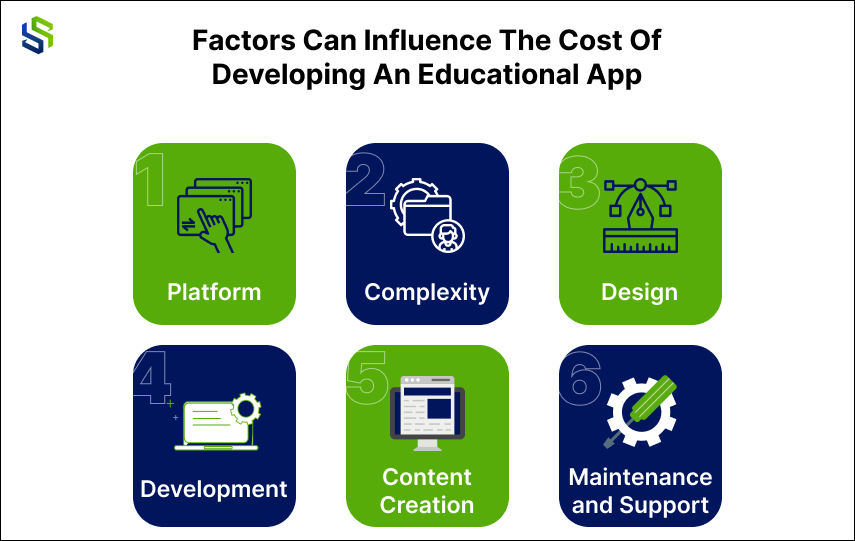
Platform
The cost to build an app for iOS may differ from the cost to build an app for Android due to differences in the development process and the required tools. Additionally, a web-based app will cost differently than a mobile app.
Complexity
The app’s complexity will also play a significant role in determining the development cost. Simple apps with limited features will be cheaper to develop than more complex apps with many features and interactive elements.
Design
The cost of designing an educational app will depend on the complexity of the user interface, the number of screens and elements that need to be designed, and the amount of custom artwork required.
Ready to create an education app but don’t want to spend a fortune? We offer budget-friendly development solutions.
Development
The app development cost will depend on the time it takes to build the app, the resources required, and the developer’s hourly rate.
Content Creation
The cost of creating and curating the app’s content, including creating multimedia elements and updating the app’s content is one of the most important factors.
Maintenance and Support
Additionally, ongoing costs for maintenance and support must be considered, such as fixing bugs, updating the app with new features, and ensuring that it stays compatible with new versions of the platform.
How to Reduce the Cost of an Educational App's Development?
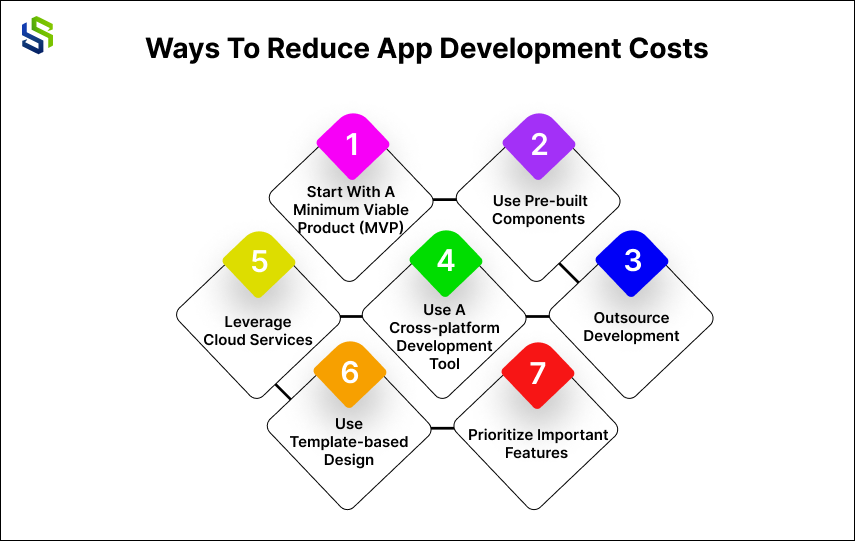
As mobile apps become increasingly popular and in demand, their development costs can skyrocket. For businesses, educational apps are no exception. Building an educational app can be costly, but there are ways to help reduce the development cost, which is included below.
Start With A Minimum Viable Product (MVP)
Rather than trying to build a fully-featured app all at once, start with a minimal version of the app that includes only the most essential features. This will allow you to test the market and gather feedback before investing more resources in the app.
Use Pre-built Components
Instead of building everything from scratch, consider using pre-built components and libraries to save time and money. This could include pre-designed user interface elements, pre-built quiz or progress tracking features, and open-source libraries for everyday functions.
Outsource Development
Outsourcing some or all of the development work can reduce costs. For example, you might outsource the back-end development to a specialist firm while keeping the front-end development in-house.
Use A Cross-platform Development Tool
Using a cross-platform development tool like React Native or Xamarin can help to reduce the cost of developing for multiple platforms since the same codebase can be used for iOS and Android.
Leverage Cloud Services
Using cloud services such as AWS, Azure, or GCP can help to reduce the cost of server infrastructure, storage, and other services.
Use Template-based Design
Prioritize Important Features
Prioritize the essential features of your app and ensure that the development budget is allocated to those features first.
Consider using an agile development approach
An Agile methodology can keep development costs under control by breaking down the development process into smaller, manageable stages. This allows you to adapt and change as you learn more about what your users want and what is and isn’t working in your app.
Ready to get started with the development journey for your educational app development?
Conclusion
Creating an educational app can be expensive, but the rewards can be significant. Creating an educational app that meets your standards requires a substantial investment of time and money, but this investment can pay off in the form of better user engagement and higher ratings. With the right strategy and resources in place, you can create an educational app that makes a real difference in the world of education.
We hope this guide has helped you better understand the e-learning mobile app development process and has taken you one step closer to creating a powerful and effective educational app. With the knowledge you have gained, you can now confidently move forward in the development process, creating a robust and user-friendly app that meets the needs of your learners. To make things easier, you can take the help of a mobile development company, like Syndell that not only provides mobile development services but also provide mobile developers for hire to get started with the app development services instantly.
So why wait? Contact us to take leverage of our development services right away!
FAQs
The average cost to create an educational app can range from $10,000 to $1,00,000, depending on its complexity, features, and the development team creating it.
The cost of developing an app for iOS can differ from developing an app for Android. This is because each platform’s development process and tools can vary.
A more complex and visually appealing design can cost more to create. This is because it requires more time and resources to develop.
The more features an app has, such as interactive elements or gamification, the more it will cost to develop. This is because adding more features requires more time and resources.
The cost of hiring an in-house team or an agency can vary depending on location and experience. A more experienced and reputable development team will likely charge more for their services.
It is essential to consult with a professional developer to get a better understanding of the cost of creating your specific educational app. They will be able to provide you with a detailed estimate based on the specific features and design of your app.


